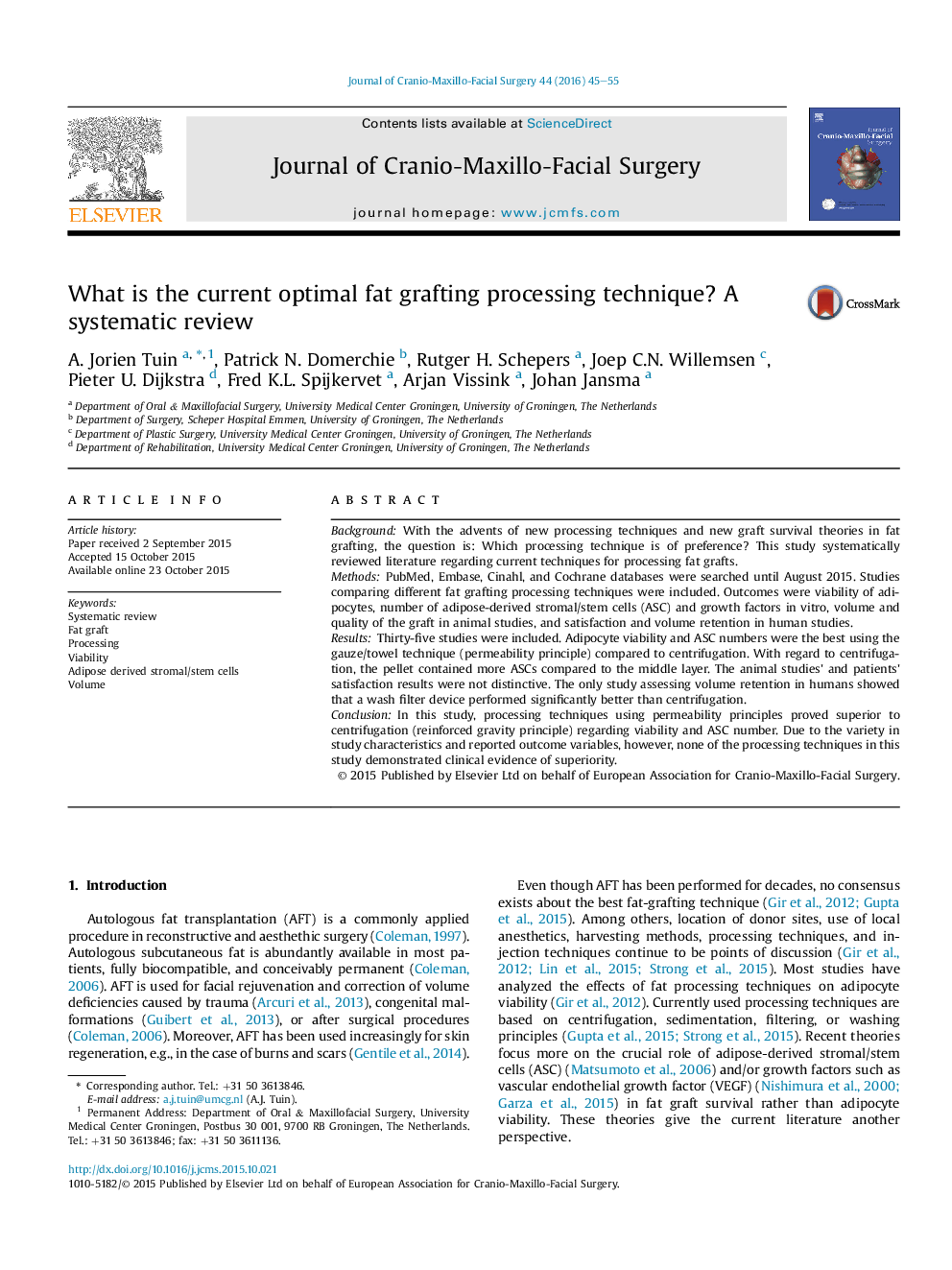| Article ID | Journal | Published Year | Pages | File Type |
|---|---|---|---|---|
| 3142126 | Journal of Cranio-Maxillofacial Surgery | 2016 | 11 Pages |
BackgroundWith the advents of new processing techniques and new graft survival theories in fat grafting, the question is: Which processing technique is of preference? This study systematically reviewed literature regarding current techniques for processing fat grafts.MethodsPubMed, Embase, Cinahl, and Cochrane databases were searched until August 2015. Studies comparing different fat grafting processing techniques were included. Outcomes were viability of adipocytes, number of adipose-derived stromal/stem cells (ASC) and growth factors in vitro, volume and quality of the graft in animal studies, and satisfaction and volume retention in human studies.ResultsThirty-five studies were included. Adipocyte viability and ASC numbers were the best using the gauze/towel technique (permeability principle) compared to centrifugation. With regard to centrifugation, the pellet contained more ASCs compared to the middle layer. The animal studies' and patients' satisfaction results were not distinctive. The only study assessing volume retention in humans showed that a wash filter device performed significantly better than centrifugation.ConclusionIn this study, processing techniques using permeability principles proved superior to centrifugation (reinforced gravity principle) regarding viability and ASC number. Due to the variety in study characteristics and reported outcome variables, however, none of the processing techniques in this study demonstrated clinical evidence of superiority.
